Home> Company News> Understanding the Technology Behind Variable Displacement Hydraulic Pumps
- AddressNorth Tan Street, Jinan,Shandong
- Factory Address123 Ubi Ave 3 #12-30 Frontier Singapore 408867
- Worktime9:00-18:00(Beijing time)
- Phone(Working Time)86 0531-8299 9952
A variable displacement hydraulic pump is a type of hydraulic pump that is designed to vary the flow of hydraulic fluid to meet the needs of different hydraulic systems. The pump has a displacement mechanism that can be adjusted to increase or decrease the amount of fluid that is delivered to the system. This mechanism allows the pump to vary the flow of hydraulic fluid according to the needs of the system, making it a highly efficient and versatile option for many different applications.
The history of variable displacement hydraulic pumps dates back to the mid-20th century when the first designs were developed. Over time, the technology has continued to evolve, and today, there are many different types of variable displacement hydraulic pumps available on the market. These pumps have become a critical component in many industrial and commercial applications, including construction, agriculture, automotive, and many others.
Understanding the technology behind variable displacement hydraulic pumps is crucial for anyone who works with hydraulic systems. In this article, we will explore the working principles of variable displacement hydraulic pumps, their advantages and disadvantages, applications, maintenance, troubleshooting, and future developments in the technology.

Working principle of variable displacement hydraulic pump
Variable displacement hydraulic pumps are designed to provide variable fluid flow and pressure as per the system’s requirements. They adjust their output based on the load of the system, which makes them more efficient than fixed displacement hydraulic pumps.
The working principle of variable displacement hydraulic pumps is based on the ability to change the volume of fluid that is being displaced, which is achieved by changing the displacement of the pump. The pump consists of a cylinder block with multiple pistons that move back and forth in the cylinder. These pistons are connected to a swash plate that changes the angle of the pistons as they rotate around the cylinder block.
When the swash plate is in the neutral position, the pistons do not move and no fluid is being displaced. As the angle of the swash plate changes, the pistons move in and out of their cylinders, which causes fluid to be drawn in and then expelled through the outlet port.
The displacement of the pump can be changed by adjusting the angle of the swash plate. This is typically done through a hydraulic servo mechanism that is controlled by a solenoid valve. When the solenoid valve receives a signal from the control system, it adjusts the servo mechanism to change the angle of the swash plate. This in turn changes the displacement of the pump and the volume of fluid being displaced.
There are different types of variable displacement hydraulic pumps, including axial piston, radial piston, and vane pumps. Axial piston pumps are the most common type of variable displacement hydraulic pump and are commonly used in industrial and mobile equipment applications. Radial piston pumps are used in applications where high pressure and low flow rates are required. Vane pumps are generally used in low-pressure applications, such as power steering systems in automobiles.
Overall, the working principle of variable displacement hydraulic pumps is based on the ability to adjust the displacement of the pump to meet the flow and pressure requirements of the hydraulic system. This makes them highly efficient and effective in a wide range of applications.
Advantages and disadvantages of variable displacement hydraulic pumps
Variable displacement hydraulic pumps offer several advantages over fixed displacement pumps, including:
-
Energy efficiency: Variable displacement pumps can adjust their flow rate and pressure to match the requirements of the system, resulting in less energy waste and lower operating costs.
-
Enhanced control: Variable displacement pumps provide greater control over the hydraulic system, allowing for more precise and accurate operation.
-
Versatility: Variable displacement pumps can be used in a wide range of applications and can adapt to changing system requirements.
-
Extended lifespan: Variable displacement pumps experience less wear and tear than fixed displacement pumps, resulting in a longer lifespan and reduced maintenance costs.
-
Higher performance: Variable displacement pumps can handle higher flow rates and pressures, making them suitable for heavy-duty applications.
However, variable displacement hydraulic pumps also have some disadvantages, including:
-
Higher cost: Variable displacement pumps are generally more expensive than fixed displacement pumps due to their advanced technology and additional components.
-
Complexity: Variable displacement pumps are more complex and require more maintenance than fixed displacement pumps.
-
Noise: Variable displacement pumps can produce more noise during operation than fixed displacement pumps.
-
Temperature sensitivity: Variable displacement pumps can be sensitive to changes in temperature, which can affect their performance and efficiency.
In comparison to fixed displacement pumps, variable displacement pumps provide more benefits, but the cost and complexity of these pumps should be taken into consideration before deciding on the appropriate type of hydraulic pump for a specific application.
Applications of variable displacement hydraulic pumps
Variable displacement hydraulic pumps are used in a wide range of industrial and commercial applications, owing to their versatility, efficiency, and reliability. Here are some of the most common applications of variable displacement hydraulic pumps:
-
Construction machinery: Variable displacement hydraulic pumps are used extensively in construction machinery, including excavators, backhoes, and loaders. These machines require precise control of hydraulic fluid flow to perform tasks such as digging, lifting, and grading. The ability to adjust the pump displacement to match the load demand is critical in ensuring optimal machine performance and fuel efficiency.
-
Industrial machinery: Variable displacement hydraulic pumps are used in a variety of industrial applications, such as material handling, metal forming, and machine tooling. In these applications, hydraulic power is used to control the movement of heavy loads and the application of force in the manufacturing process. The ability to adjust pump displacement allows for precise control of the hydraulic system and can lead to significant improvements in energy efficiency.
-
Agriculture machinery: Variable displacement hydraulic pumps are widely used in agriculture machinery such as tractors and combines. These machines rely on hydraulic power to operate various functions such as lifting and lowering implements, steering, and controlling the engine. The ability to adjust the pump displacement can provide greater control over the hydraulic system, which translates to more efficient and effective machine operation.
-
Automotive industry: Variable displacement hydraulic pumps are used in the automotive industry to power various functions such as power steering, brake systems, and suspension systems. These pumps are critical in providing precise and reliable control of these systems, leading to improved safety and driving experience for the operator.
-
Aerospace industry: Variable displacement hydraulic pumps are used in the aerospace industry to power various systems such as landing gear, flight controls, and hydraulic actuators. These pumps are essential in providing the precise control needed for safe and efficient aircraft operation.
-
Marine industry: Variable displacement hydraulic pumps are used in the marine industry to power various systems such as steering, winches, and cargo handling equipment. The ability to adjust pump displacement allows for precise control of the hydraulic system, which is critical in ensuring safe and efficient marine operations.
Overall, the versatility of variable displacement hydraulic pumps makes them a critical component in various industries, where precision and efficiency are essential to achieving optimal results.
Maintenance and troubleshooting of variable displacement hydraulic pumps
Proper maintenance of variable displacement hydraulic pumps is essential to ensure their efficient and reliable performance. Regular maintenance helps to prevent breakdowns and extend the lifespan of the pump. In this section, we will discuss the best practices for maintaining variable displacement hydraulic pumps and common issues that can arise with these pumps.
Maintenance best practices for variable displacement hydraulic pumps
-
Regular oil analysis: The oil used in the hydraulic pump must be checked periodically to ensure that it is free of contaminants and has the right viscosity. An oil analysis can provide valuable information about the condition of the oil and the hydraulic system.
-
Filter replacement: Filters are an important component of hydraulic pumps and must be replaced regularly to prevent the accumulation of contaminants that can clog the system. The frequency of filter replacement depends on the type of pump and the operating conditions.
-
Regular inspection: It is important to inspect the pump regularly for signs of wear and tear. Any signs of leaks, cracks, or other damage must be addressed immediately to prevent further damage to the system.
-
Lubrication: Proper lubrication is essential to ensure that the pump operates smoothly and efficiently. The pump must be lubricated according to the manufacturer's recommendations.
Common issues that can arise with variable displacement hydraulic pumps
-
Overheating: Overheating is a common issue with variable displacement hydraulic pumps. This can be caused by a variety of factors, including high system pressure, low oil levels, and dirty filters. Overheating can cause damage to the pump and other components of the hydraulic system.
-
Leaks: Leaks are another common issue with hydraulic pumps. Leaks can be caused by worn out seals, damaged hoses, or loose fittings. Leaks can cause a loss of pressure and affect the performance of the pump.
-
Noise: Unusual noises, such as knocking or grinding, can be a sign of a problem with the hydraulic pump. This can be caused by worn out components or other issues with the pump.
Troubleshooting techniques to identify and resolve issues with variable displacement hydraulic pumps
-
Check the oil levels: Low oil levels can cause overheating and other issues with the pump. Make sure that the oil levels are at the correct level.
-
Check the filters: Dirty filters can cause a loss of pressure and other issues with the pump. Make sure that the filters are clean and replaced regularly.
-
Check the seals and fittings: Leaks can be caused by worn out seals, damaged hoses, or loose fittings. Make sure that all seals and fittings are in good condition.
-
Check the components: Unusual noises can be a sign of a problem with the hydraulic pump. Check all components for signs of wear and tear and replace any damaged components.
In conclusion, proper maintenance and troubleshooting of variable displacement hydraulic pumps are crucial for their efficient and reliable performance. Regular maintenance, including oil analysis, filter replacement, and inspection, can prevent breakdowns and extend the lifespan of the pump. Common issues such as overheating, leaks, and noise can be addressed by checking oil levels, filters, seals, fittings, and components.
Future Developments in Variable Displacement Hydraulic Pump Technology
The hydraulic industry is constantly evolving, and variable displacement hydraulic pump technology is no exception. As manufacturers seek to improve their products' performance, they invest in research and development to make them more efficient, durable, and cost-effective.
Currently, several areas of research are being explored to improve variable displacement hydraulic pump technology. One such area is the development of smart hydraulic systems. These systems use sensors and control algorithms to optimize the operation of hydraulic pumps and other components, leading to more efficient and reliable performance.
Another area of research is the use of new materials and manufacturing techniques to create lighter, more compact pumps that still deliver high performance. This trend is particularly important in mobile applications, where space is often limited, and weight reduction is a critical factor.
Advancements in the design of variable displacement hydraulic pumps are also expected to make them more versatile and adaptable to different operating conditions. For example, researchers are exploring the use of variable displacement pumps in hybrid hydraulic-electric systems, which could offer significant benefits in terms of energy efficiency and emissions reduction.
In addition to these developments, advancements in data analytics and machine learning are also expected to have a significant impact on the hydraulic industry. By collecting and analyzing data from hydraulic systems, manufacturers can gain insights into how their products are performing in the field and use this information to improve their designs.
As hydraulic pump manufacturers continue to invest in research and development, we can expect to see significant advancements in variable displacement hydraulic pump technology in the coming years. These advancements will lead to more efficient, reliable, and versatile hydraulic systems, with benefits for industries ranging from construction and agriculture to aerospace and manufacturing.

In conclusion, variable displacement hydraulic pumps have revolutionized the hydraulic pump industry by providing a more efficient and versatile option for powering hydraulic systems. With the ability to adjust the displacement according to system requirements, variable displacement hydraulic pumps can save energy, reduce operating costs, and increase system performance.
While there are some disadvantages to using variable displacement hydraulic pumps, such as the initial cost and potential maintenance issues, the benefits far outweigh the drawbacks for many industrial and commercial applications. As technology continues to advance, it is likely that variable displacement hydraulic pump technology will only improve, leading to even more efficient and reliable hydraulic systems.
Overall, understanding variable displacement hydraulic pump technology is essential for anyone involved in the hydraulic pump industry or using hydraulic systems in their operations. By keeping up with maintenance best practices and troubleshooting techniques, users can ensure that their variable displacement hydraulic pumps are functioning at optimal levels and providing the maximum benefits possible.


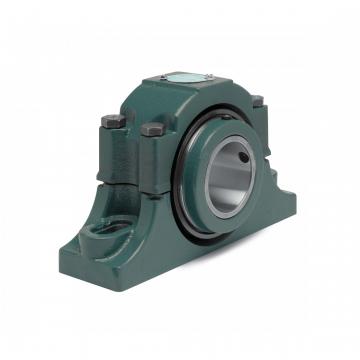 Mounted Tapered Roller Bearings P4B-EXL-212RE
Mounted Tapered Roller Bearings P4B-EXL-212RE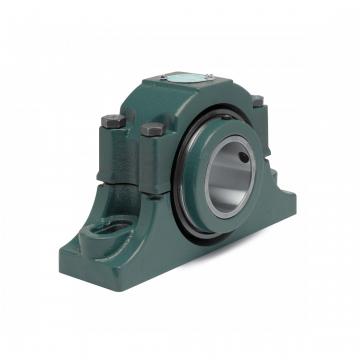 Mounted Tapered Roller Bearings P4B-EXL-400R
Mounted Tapered Roller Bearings P4B-EXL-400R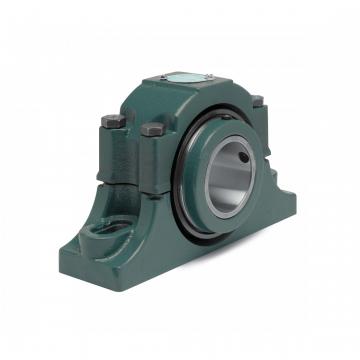 Mounted Tapered Roller Bearings P4B-EXL-400RE
Mounted Tapered Roller Bearings P4B-EXL-400RE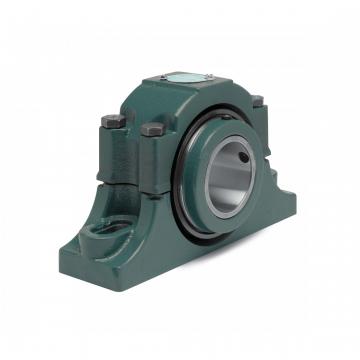 Mounted Tapered Roller Bearings P4B-EXL-315RE
Mounted Tapered Roller Bearings P4B-EXL-315RE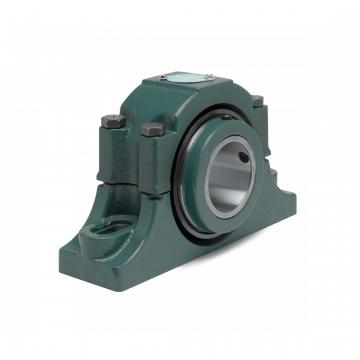 Mounted Tapered Roller Bearings P4B-EXL-207RE
Mounted Tapered Roller Bearings P4B-EXL-207RE